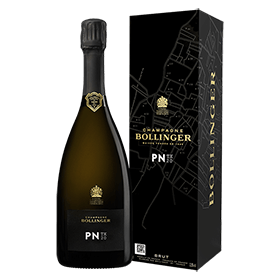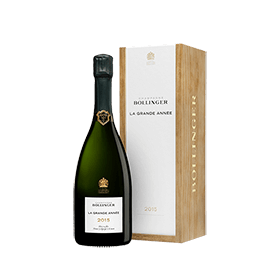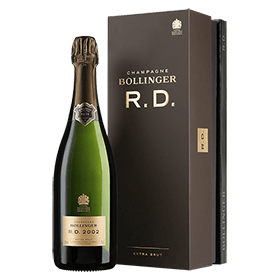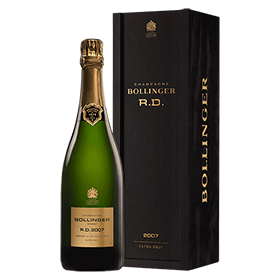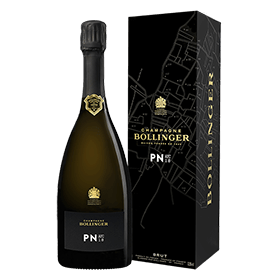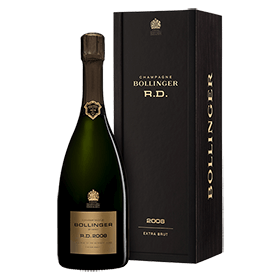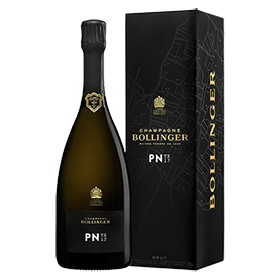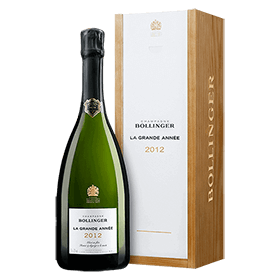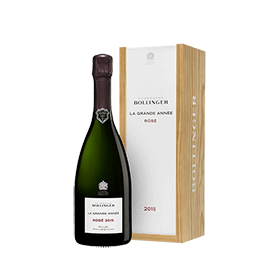For nearly two centuries, Maison Bollinger has embodied Champagne excellence. Founded in 1829 in Aÿ, at the heart of Champagne, this family institution remains one of the few great houses still independent today.
Emblematic cuvées with a bold character
Special Cuvée, a timeless signature
The Bollinger flagship Special Cuvée immediately reveals the house style: a luminous golden hue and a delicate effervescence with fine, persistent bubbles. The nose displays ripe fruit aromas, notably pear and fresh walnut, enhanced by characteristic spicy notes. On the palate, the structure asserts itself with elegance, driven by the dominance of Pinot Noir, which brings breadth and length. Its remarkable versatility allows for varied pairings, from dry-cured ham with Parmesan as an aperitif to noble shellfish such as grilled lobster, as well as sushi, foie gras, or dishes featuring truffles and morels.
Bollinger Rosé, the art of blending
Composed of Pinot Noir, Chardonnay, and Meunier, this blended rosé shows a robe with captivating, coppery-gold highlights. The bouquet expresses red berries with finesse—redcurrant, cherry, wild strawberry—complemented by the spicy touch that defines the house identity. This cuvée particularly elevates the iodized flavors of langoustine, lobster, and salmon. It also pairs beautifully with mildly spiced Japanese cuisine and fruit desserts such as strawberry or raspberry tarts.
La Grande Année, the vintage expression
Produced only in exceptional years, this prestigious cuvée reveals a rarely rich aromatic palette. The nose offers subtle, complex aromas, while on the palate the texture combines freshness and creaminess. Extended aging—twice the appellation’s minimum—confers remarkable cellaring potential.
In its rosé interpretation, La Grande Année Rosé charms with a texture that is both creamy and gourmand, making it the ideal partner for duck breast, pigeon, quail, or guinea fowl.
An exceptional winegrowing heritage
The vineyard, a jewel of Champagne
The estate spans 178 hectares across seven Grand Cru and fourteen Premier Cru villages. This remarkable proportion of classified vines places the property among the region’s most prestigious. The vineyard extends over three distinct geological zones: the Montagne de Reims with calcareous and chalky soils, the Vallée de la Marne with clay-limestone terroirs, and the Côte des Blancs with its characteristic chalky slopes.
La Côte aux Enfants, an emblematic monopole
This mythical parcel located in Aÿ is the property’s crown jewel. This monopole yields an exceptional Pinot Noir, vinified in certain years as a red wine to craft rosé Champagnes. The optimal exposure and distinctive geological composition confer remarkable concentration and finesse to the grapes.
Preserved artisanal know-how
Vinification in oak barrels
The House perpetuates a now-rare method: systematically vinifying part of the production in oak barrels. This ancestral practice brings aromatic complexity and structure to the base wines, while allowing natural micro-oxygenation that fosters the harmonious evolution of the Champagnes.
Extended aging, a guarantee of complexity
The maturation time on lees far exceeds legal requirements, reaching double the minimum duration set by the appellation. This patience enables the development of subtle tertiary aromas and a signature creamy texture. Reserve wines, kept in an exceptional stock of magnums, enrich the blends with their maturity and depth.
A lineage of emblematic figures
Jacques Bollinger, a young German from Württemberg, partnered in 1829 with Paul Renaudin and Count Athanase de Villermont to found the House. From the outset, the quest for excellence and an artisanal approach shaped the identity of this family business, which has preserved its independence over the centuries.
Lily Bollinger, a legendary figure who headed the estate from 1941 to 1971, expanded the brand’s international renown. Her legacy endures in the pursuit of quality and the elegance of the cuvées.
Today, the House remains a benchmark in prestige Champagne, combining family independence, artisanal methods, and uncompromising standards. From Brut Special Cuvée to exceptional vintages, the range offers expressions to accompany every tasting moment, from the aperitif to the most refined dishes.




